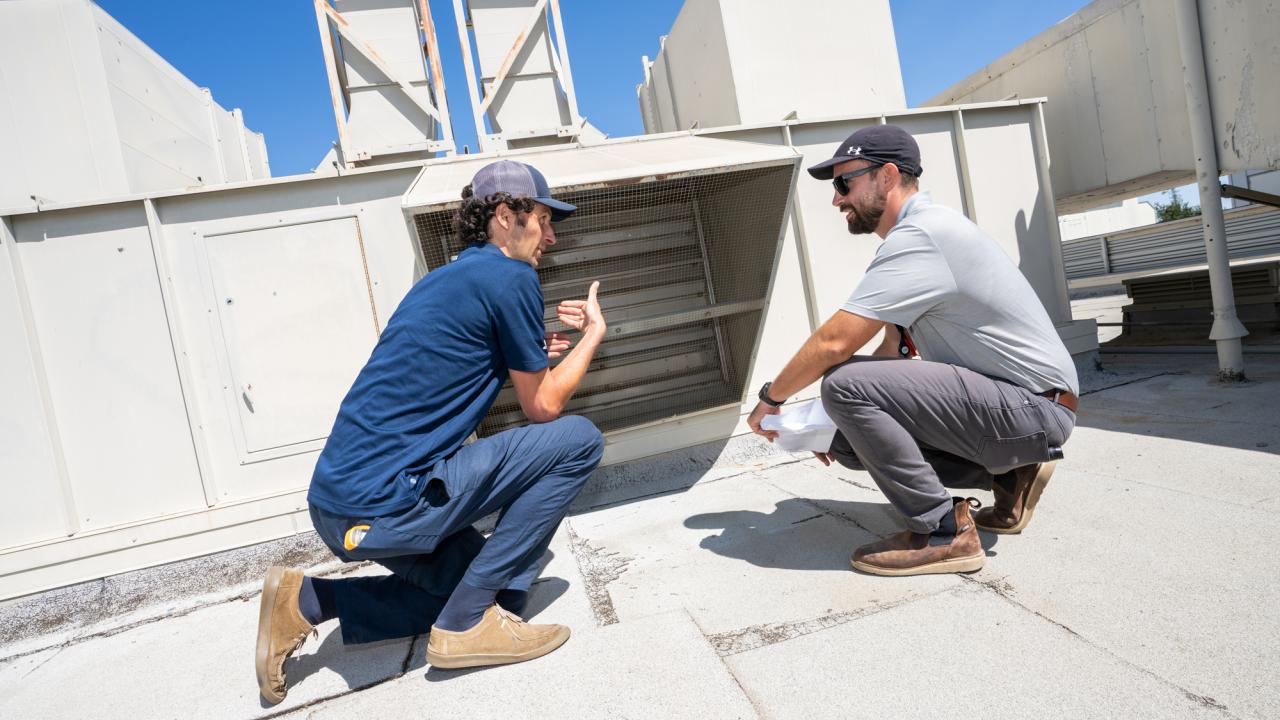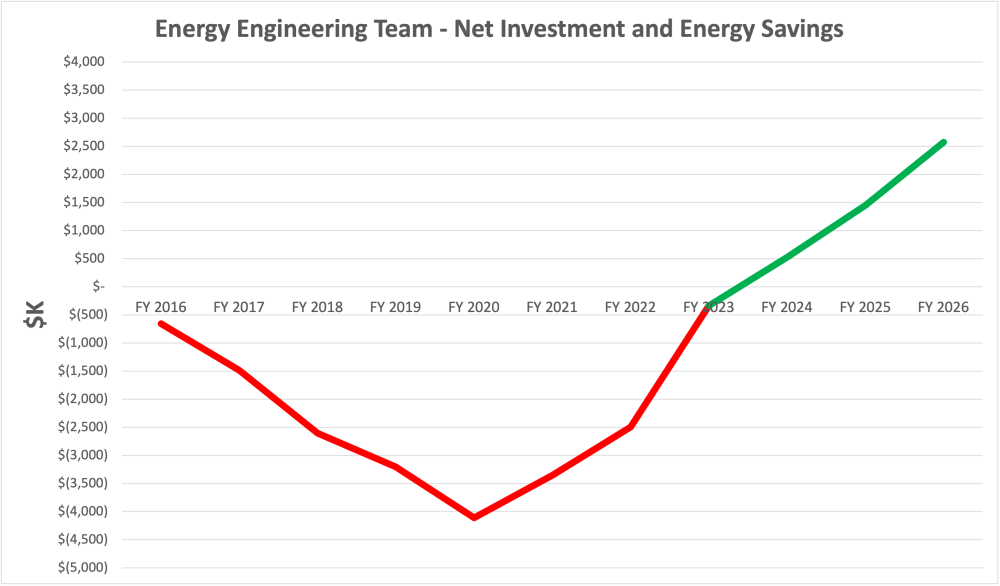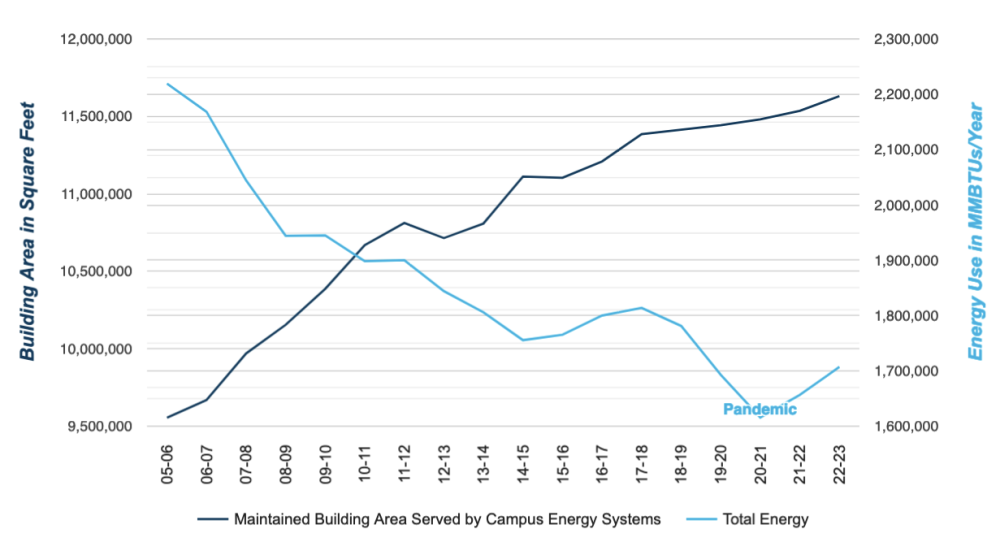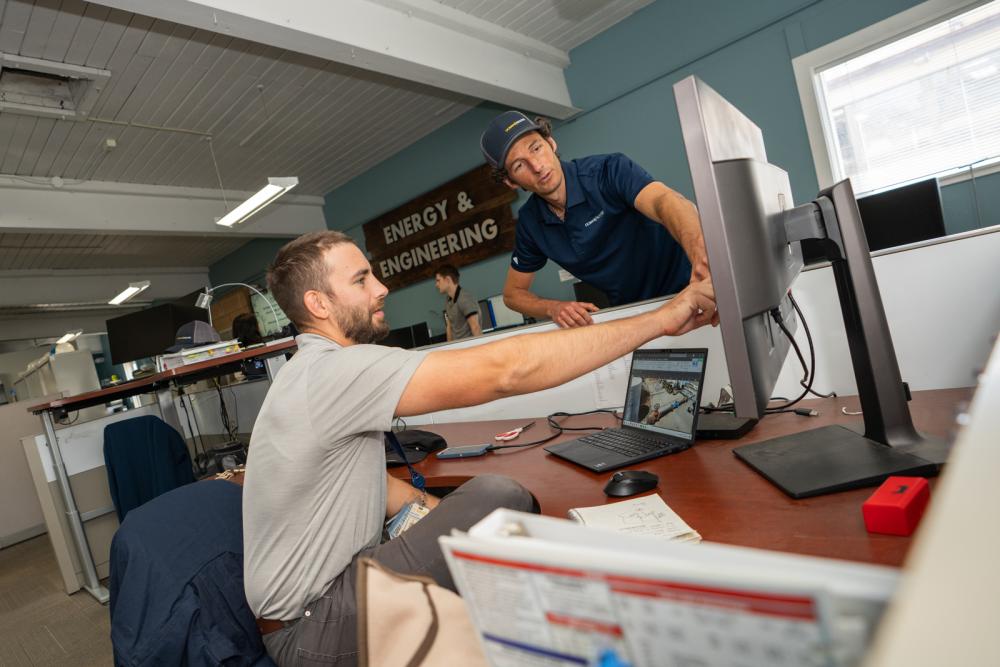
How Investing in Building Optimization Saved UC Davis $11 Million in Energy Costs
Facilities Management’s Team Takes on Data-Driven HVAC Improvements
Nearly a decade ago, campus leaders at UC Davis decided to invest in a small team of employees to reduce energy by optimizing building controls and systems. The concept was that UC Davis could fund such a team, if it could curb high utility bills — essentially having the team pay for itself with energy savings.

Nine years later — and a year ahead of initial estimates — that investment has paid off. The Energy Engineering team in Facilities Management has managed to shave off more than $11 million in energy costs all while keeping building occupants comfortable, which more than pays back campus investments in the team.
“We’ve been cost-positive on an annual basis for a few years — saving $3 million last year and more than $2 million the year before — but this year we passed the threshold of repaying campus to offset the entire investment in our team so far,” said Nico Fauchier-Magnan, supervisor of the Energy Engineering team in Facilities Management.
The Facilities Management team he leads was started in 2015-16 and includes six full-time staff members who are engineers or data scientists, plus two part-time grad student positions and four part-time undergraduate positions.
Most of the team members were hired as a result of campus committing to invest up to $1.5 million per year for 10 years into the team and its endeavor. The $12 million invested from central campus funds so far has been counterbalanced with more than $11 million in savings plus nearly $1 million in additional incentives from PG&E related to the team’s work.
“We’ve captured savings from things you can do with staff time, taking the time to tune the buildings and schedule them better,” said Joshua Morejohn, executive director of Facilities Management’s utilities and engineering operations. “It takes a dedicated team to work on it and keep working on it.”

How optimizing buildings saved energy
The team reduces UC Davis’ use of electricity and natural gas, primarily through fine-tuning building controls for heating, ventilation and air conditioning, or HVAC, which is the largest type of energy use on campus.
Since that first year of funding in 2015-2016, UC Davis has reduced its total annual energy use by about 500,000 MMBTUs, particularly notable since building space also grew during that time by more than 500,000 square feet.
The team has accomplished this feat through several tactics, including:
- HVAC scheduling, which aims to keep buildings comfortable for occupants without wasting energy in empty buildings. After initial consultation with building managers, chief administrative officers and other administrative staff to understand schedules and needs of various parts of the building, the team continues to make weekly or even daily adjustments to building systems. Find out more about energy saved from HVAC scheduling.
- Building commissioning, which is a 6-12 month process of in-depth optimization of an individual building in close partnership with occupants and stakeholders, saving 15-20% of a building’s overall energy consumption. This targeted approach is usually applied to labs, which are the most energy-intensive building type on campus. This process makes some of the biggest impacts in terms of savings for the Energy Engineering team.
- Holiday shutdowns for all employee holidays, not just winter break and spring break. HVAC scheduling and holiday shutdowns also take into account events scheduled in reserved spaces on campus.
- Small workplace automation and remote monitoring, or SWARM, which is a project that installed simple internet-connected thermostats and electricity meters on more than 70 smaller campus buildings to enable centralized scheduling, monitoring and troubleshooting. See how small buildings in SWARM save energy at UC Davis.
- Building occupant feedback, as Facilities Management is committed to reading every piece of feedback that comes from the campus's custom Thermoostat tool and taking action on tips that require further investigation, fine tuning and maintenance.

The value of having a team and meeting sustainability goals
Energy Engineering team staff:
- Nicolas X. Fauchier-Magnan, Supervisor
- Dan Colvin, Data Science
- Tom Ryan, Utilities Projects
- Hiroko Masuda, Commissioning
- Daniel Imperiale, Commissioning
- Samuel Cole, Energy Projects
- Andre Nelson, Energy Projects (supported by other funds)
See Facilities Management Org Charts for more.
“The team is what I’m most proud of,” Fauchier-Magnan said. “We have such a clear mission, and the team I work with is very creative, resourceful and innovative. I'm impressed by them every day.”
Before the Energy Engineering team, many campus buildings received upgraded HVAC and control systems with funding from the Statewide Energy Partnership between UC Davis and PG&E. Common practice at the time was for consultants to initially finetune these systems.
“But when the consultants finished the job, their knowledge would leave campus with them,” Fauchier-Magnan said. “Our team has built long-term relationships with facility managers, faculty members, building occupants and shop technicians. So we're really well positioned to optimize buildings and then can keep maintaining those savings and comfort levels.”
The team also helps UC Davis meet energy efficiency goals in UC’s systemwide Sustainable Practices Policy, including reducing energy use intensity (energy used per square foot) by 2% each year.
“We did this for the right reason. We want to reduce our energy footprint, and this makes it easier for UC Davis to achieve our goals,” he said. “But it was also fiscally sound. I think it's really cool to know that you can reduce your impact and do it in a cost-positive way.”
Popular ideas for saving energy costs at UC Davis
Reducing energy costs came up again and again in the IDEA$ at Work campaign last year, when UC Davis asked faculty and staff about their practical insights into ways the university could make or save money. A curated list of 80 or so employee suggestions were forwarded to the Facilities Management team, for review, consideration and response. It turns out that great minds really do think alike, and quite a few of those suggestions had already been implemented successfully in campus buildings. Here are a few highlights of popular suggestions and progress already achieved that also involved the Energy and Engineering team’s work:
- Add smart thermostats to reduce HVAC costs- The majority of campus buildings have digital controls and can be viewed remotely.
- Seek out opportunities to reduce HVAC based on occupancy in labs - This example project saves annual energy costs, while providing more local control of temperatures in an animal research and laboratory building.
- Adjust building temperatures for comfort and cost savings - The interactive TherMOOstat website collects feedback from students, faculty and others to identify heating and cooling issues in classrooms, in real time.
- Adjust HVAC systems based on occupancy - Facilities teams are working to match HVAC schedules to occupancy patterns in buildings and provide flexibility to after-hours occupants with local controls.
Find more highlights like this on the IDEA$ websites.
At UC Davis, sustainability is a multi-dimensional challenge with ambitious goals. The strategies and projects needed to reach those goals involve our entire university, especially the operations represented here: buildings, climate, energy, food and dining, labs, land management, zero waste, purchasing, transportation, and more. Learn about these and other goals on the Sustainable UC Davis website.
